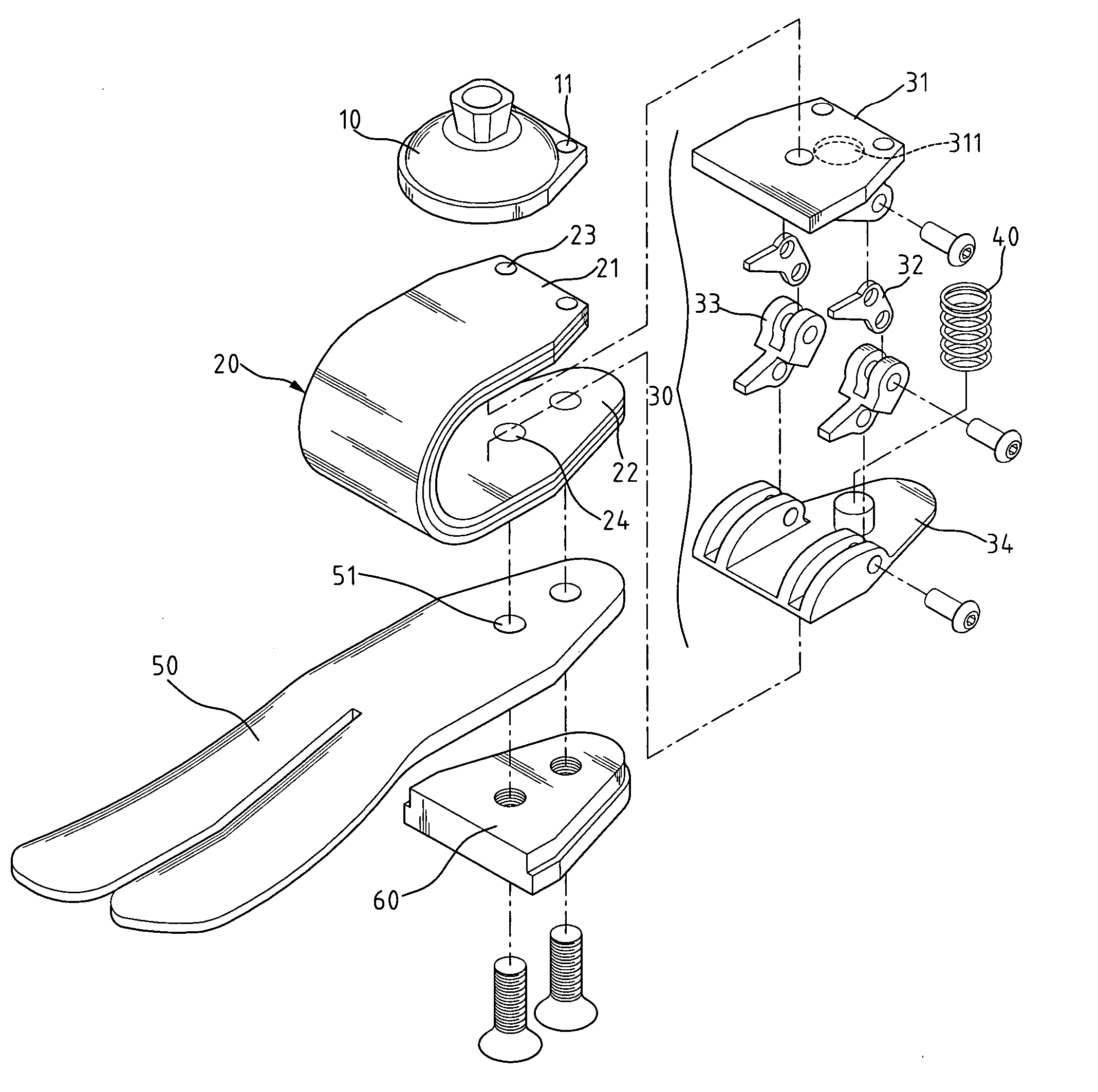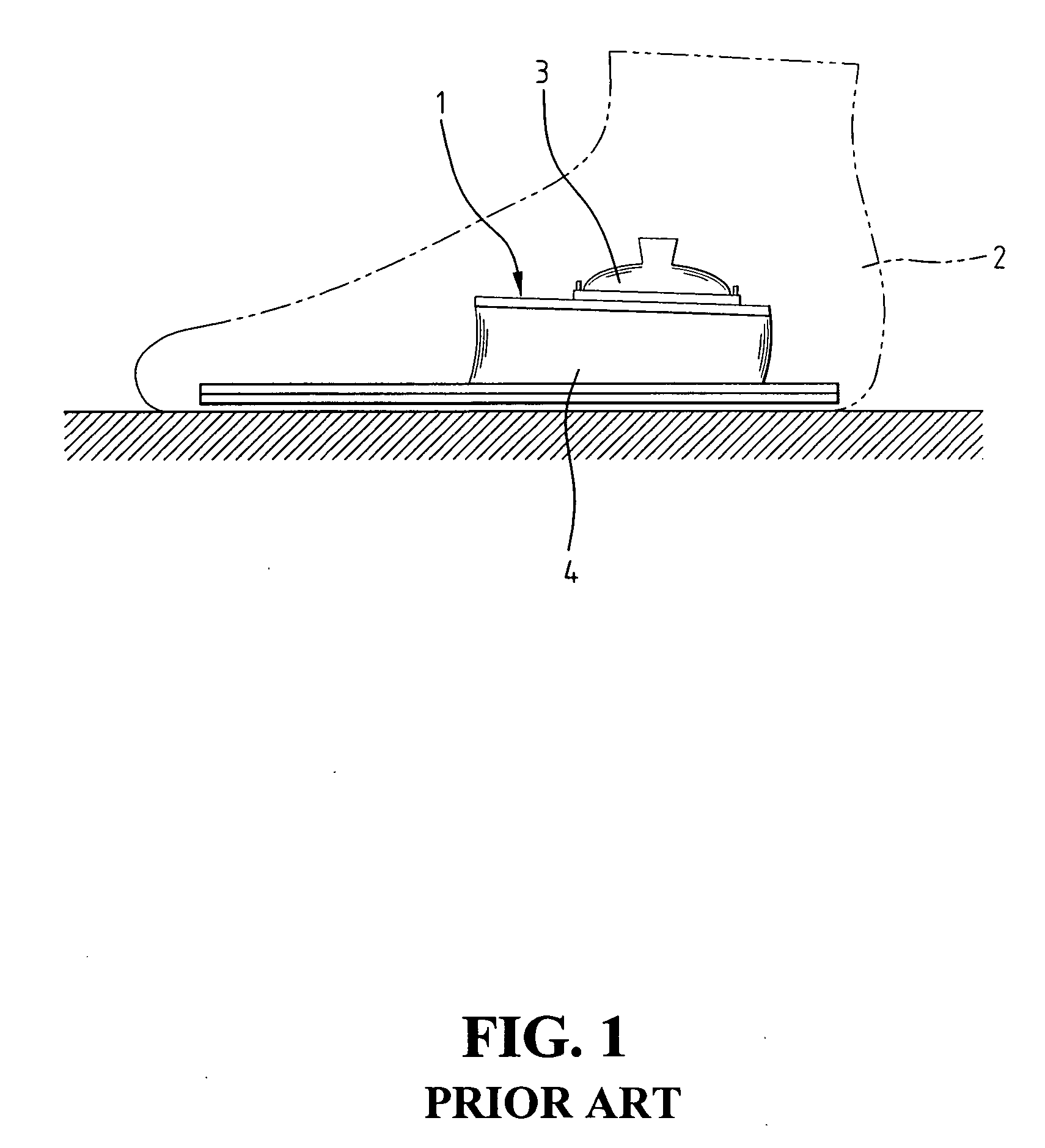Elastic energy-stored artificial foot
- Summary
- Abstract
- Description
- Claims
- Application Information
AI Technical Summary
Benefits of technology
Problems solved by technology
Method used
Image
Examples
Embodiment Construction
[0016]FIGS. 2 and 3 illustrate an artificial foot, designated with reference numeral 2, constructed in accordance with the present invention. The artificial foot 2 comprises a supporter 10, a holder 20, a linking mechanism 30, an elastic element 40, and a sole 50. A top of the holder 20 is connected with the supporter 10 and a bottom of the holder 20 is fixed with the sole 50. The linking mechanism 30 is provided at a U-shaped space formed by the holder 20. In the embodiment according to the present invention, a real structure of foot is integrally formed, and the holder 20, the elastic element 40, and the linking mechanism 30 are structured into an elastic structure of cushion similar to an ankle in function. In the embodiment according to the present invention, the supporter 10 is upwardly connected to an artificial leg and jointed to a fixing end located therein and the rest are placed into an artistic artificial foot copying features of a real foot so that amputees may have the ...
PUM
 Login to View More
Login to View More Abstract
Description
Claims
Application Information
 Login to View More
Login to View More - R&D
- Intellectual Property
- Life Sciences
- Materials
- Tech Scout
- Unparalleled Data Quality
- Higher Quality Content
- 60% Fewer Hallucinations
Browse by: Latest US Patents, China's latest patents, Technical Efficacy Thesaurus, Application Domain, Technology Topic, Popular Technical Reports.
© 2025 PatSnap. All rights reserved.Legal|Privacy policy|Modern Slavery Act Transparency Statement|Sitemap|About US| Contact US: help@patsnap.com



